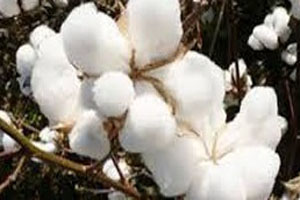
Cotton prices decline amid dull buying
YarnsandFibers News Bureau 2019-01-31 11:34:00 – MumbaiCotton futures on the Intercontinental Exchange (ICE) will have a direct impact on Indian prices. ICE cotton futures traded at 74.13 cents on Wednesday. Any spurt in ICE will make a favourable case for Indian cotton exports. Atul Ganatra, President, Cotton Association of India (CAI), the apex trade body comments, “Uncertainty still looms over the trade truce between the US and China. This is causing a range-bound movement for cotton. Indian cotton prices have now bottomed out as there is no room for further correction. Ginners are already facing costly inputs due to the increased minimum support price (MSP).â€
Reduction in crop size -The Centre had increased the MSP to ₹5,450 per quintal for raw cotton or kapas. Erratic rainfall and pest attacks have shrunk the crop size this year. The trade has estimated a cotton crop of 335 lakh bales, about 8 per cent lower than last year’s 365 lakh bales and the lowest since 2011-12, when it was pegged at 373.25 lakh bales. So far, farmers across the country have sold about 160 lakh bales from the current crop. There’s still an equal quantity of cotton that farmers will be bringing into the markets over the next couple of months. This is even as ginners are finding it hard to sell the processed cotton. Ramanuj Das Boob, a sourcing agent in Raichur, Karnataka said that, “It is a peculiar situation. While the buyers are slow in terms of their purchases, ginners have turned choosy on whom to sell to in order to avoid payment issues. Finding the right buyer has become a challenge for them. As a result, the stocks with ginners are going up.â€
However, with arrivals gaining momentum in the market, market prices have declined below MSP at several markets, mainly in Telangana and parts of Maharashtra.
CCI procurement -The Cotton Corporation of India (CCI) has already been making purchases at MSP. According to sources, so far about 6 lakh bales of cotton have been procured with about 80 per cent from Telangana alone and the rest from Maharashtra, Odisha, Karnataka and Gujarat. Sources estimate that CCI procurement may gain momentum in the coming weeks till February end. Last year, CCI had purchased about 3.5 lakh bales at MSP.
Exports have been slow on lack of price parity. CAI’s Ganatra said that, “But so far we have been able to ship about 23 lakh bales (each of 170 kg) till the end of January, which is still a good quantity and with a weak rupee, we are seeing parity returning for exports.†“There is no demand at present. Since Diwali there has been slackness in the consuming sectors such as yarn makers.
Ahmedabad-based cotton expert Arun Dalal said that considering US-China trade situations, and the uncertainty on the truce, we don't see any long-term bullish trend. On the other hand, in the event of lower crop projections, there are less chances of a further downside in prices.†Exporters however, believe that a spurt in prices is likely in the event of a US-China trade truce. “We are seeing favourable rupee conditions for the past few days and exports are taking place in the neighbouring countries.
Export contracts are being offered at around 74-75 cents per pound. International cotton prices may firm up from here if China agrees to buy US cotton. This will fuel prices in the domestic market, too,†said a leading cotton exporter from Ahmedabad.
Cotton prices have softened further, despite a lower crop, on weak demand from both yarn mills and overseas markets. Cotton prices are now hovering around ₹42,500-44,000 levels per candy (356 kg each), a decline of about a tenth over the comparative prices in October. At the beginning of the cotton harvest season in October, cotton prices were around ₹47,000.
Trade sources said the poor offtake by mills, which are saddled with yarn stocks, amidst rising arrivals and sluggish exports has resulted in a softening trend. Also, multinationals have stayed away from purchases on lack of export parity as the prices in the domestic market are higher than in the global market. The trade is keenly awaiting the outcome of the ongoing talks between the US and China, two large markets. The outcome of the US-China trade talks could set the direction for cotton prices in the days ahead.
Market Intelligence
Ask for free sample Report

experience
Customer Base
dedicated team
Countries Served Worldwide









